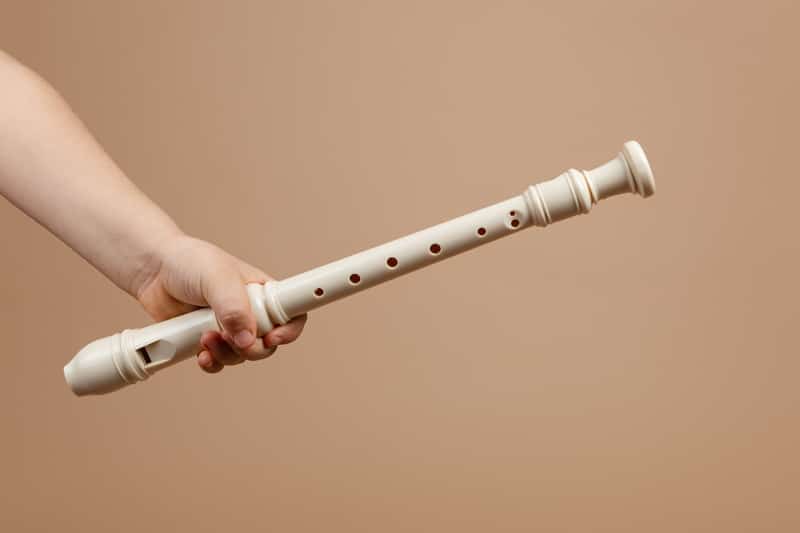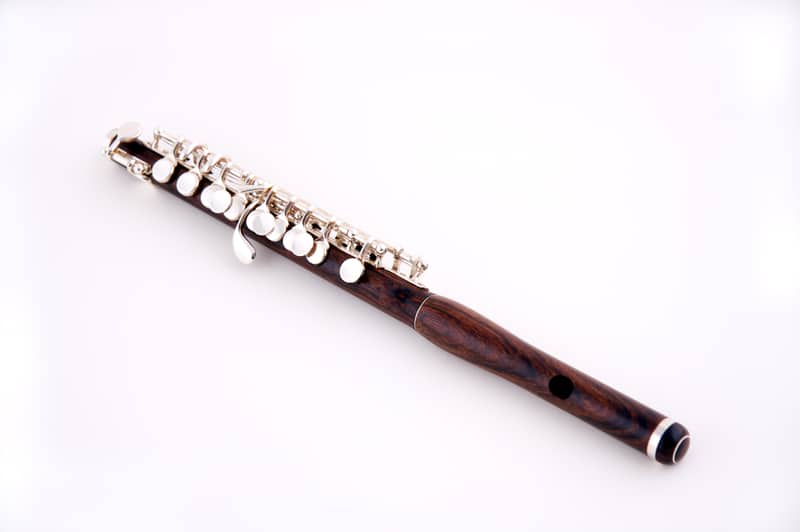
The flute is one of the most popular musical instruments, and for good reason – they’re lightweight, portable, and are relatively easy to learn. No flutist has to book an extra seat on an airplane or get a cart with wheels to transport their instrument.
But how much does a flute actually weigh? The answer depends on what kind of flute it is and what materials it’s made from. It is important to understand the different instruments in the flute family and their corresponding sizes and weights when you are considering what instrument to pursue.
Read on to find out more about the different types of flutes, the metals and other materials they can be made with, and the weights of each type of flute.
How Much Do Flutes Weigh?
The concert flute
There are many different types of flutes that exist today. When you attend an orchestra or band concert or go see a flute recital, you will most likely see the concert flute, which is the most standard size.
This instrument is pitched in C, so it is also sometimes referred to as a C-flute. Most modern flutists choose to play on flutes made from metal.
The most popular types of metal in order of cost include silver-plated nickel, silver, gold, and platinum – although many flutists choose to play custom instruments that involve using a mixture of several different types of metal.
If no add-ons or combinations of metal have been included, a silver-plated nickel flute will weigh approximately 400-600 grams. Meanwhile, a traditional silver flute will weigh about 440 grams, and a 14-carat gold flute will weigh about 500 grams.
The heaviest metal flutes are made of platinum, though these flutes are somewhat rare. A fully platinum flute will weigh closer to 520 grams.
While metal flutes are the most common, some flutists have chosen other materials. If working with a small child, a plastic flute might be a great choice, as these flutes are lighter and less expensive than their metal counterparts.
A plastic flute will weigh about 250 grams, which is significantly lower than other options. On the other hand, wood flutes, which were the most frequently played types of flute until the twentieth century, have made a resurgence in popularity in recent years.
The wood flute is actually the heaviest type of concert flute available, weighing about 560 grams.
The piccolo
Another popular type of flute is the piccolo, which is the most commonly played type of flute in classical music after the concert flute. A piccolo is only about thirteen inches long, in contrast to the concert flute, which is about twenty-six inches.
Unlike its larger relatives, the piccolo is still most often made from wood, although metal piccolos do exist. A wood piccolo is the heaviest piccolo option, weighing about 370 grams.
Silver piccolos, on the other hand, usually weigh under 230 grams, while nickel piccolos will weigh slightly more, around 280 grams. These instruments are the smallest instruments in the flute family.
Larger flutes
Although they are played less frequently, there are actually several types of flutes that are larger than the concert flute. These flutes are nearly always made from metal, though they can vary in weight depending on what combination of metals has been used.
An alto flute, which is the next size up from a concert flute, is about thirty-four inches long. Alto flutes tend to vary greatly in weight, but on average might weigh about 1 kilogram.
Even larger than the alto flute are the bass and contrabass flutes. A bass flute is about fifty-seven inches long, and weighs about 2 kilograms. The contrabass flute is rarely incorporated into classical music, but can often be seen in flute choirs to round out the bass sound.
These flutes are over six feet tall, longer than the average person, and generally weigh around 7 kilograms (though can be more). Bass flutes and contrabass flutes are not held by the player across their body as smaller flutes are.
Players must stand or use contraptions to hold the instruments up because they are too heavy and long to fit the body.
What does this mean for purchasing a flute?
Whether you’re an avid musician looking for your next instrument or just curious about how much a particular type of instrument might weigh, understanding how much your chosen instrument weighs can help you make an informed decision when buying it.
As we’ve seen here, the weight of a particular type of flute can vary depending on what materials it’s made from – silver tends to be lighter than plated nickel, while gold and platinum are heavier metal options. Wood instruments tend to be the heaviest, though they have more unique sounds.
However, it is more important to know the weight differences between the different sizes of flutes rather than the different materials. While there are weight differences between flutes made from different metals, wood, or plastic, these differences are slight and nearly negligible.
It is unlikely that these differences will affect any tension or pain associated with playing the flute or make it easier or more difficult to transport the flute. When choosing a flute, it is more important to fall in love with the sound quality of the instrument than its weight.
That being said, if you are already a flutist, and you are looking into taking up an auxiliary instrument, the weight differences may play a big role in your decision.
A piccolo is clearly the smallest and most easily transportable instrument of all the options; in fact, many flute cases have room for a piccolo inside them, making it incredibly easy to add this instrument to your collection.
Buying an alto or a bass flute will allow you to access lower pitches and deeper sounds, but these instruments do not easily fit into backpacks or preexisting cases, so this is something to consider when looking into buying them. No matter which direction you go in, however, you’ll have a fun new musical adventure!



